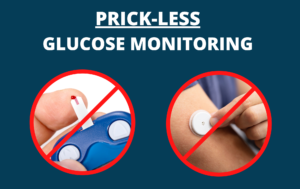Glucose monitoring is an important part of diabetes management and can be a critical element in preventing health issues. Traditional glucose monitoring methods involve puncturing the skin and drawing blood, which can be both uncomfortable and inconvenient. Non-invasive glucose monitoring devices are an alternative that eliminates the need for needles and offers a more comfortable and convenient way of measuring glucose levels.
In this article, we’ll explore some of the non-invasive methods of glucose monitoring devices currently on the market. We’ll discuss the different types of devices and the technologies they use, and explain the benefits they offer to diabetics.
Continuous Glucose Monitors
Continuous glucose monitors (CGMs) are the most common type of non-invasive glucose monitoring device. They measure glucose levels every few minutes, providing real-time data about blood sugar levels. CGMs use a tiny sensor that measures glucose levels through the skin, eliminating the need for blood tests.
The sensor is usually inserted under the skin, typically in the arm or stomach. It measures the glucose level in interstitial fluid, which is the fluid between cells. This data is then sent to a wearable device, such as a watch or smartphone, where it can be monitored.
Near-Infrared Spectroscopy
Near-infrared spectroscopy (NIRS) is a newer technology that uses light to measure glucose levels. It works by shining infrared light into the skin and measuring the amount of glucose in the resulting light reflection. It provides results that are as accurate as traditional glucose tests.
NIRS devices are small and portable, so they can be used anywhere. They are also painless, so there is no need to puncture the skin. However, NIRS devices are still in the early stages of development, so they are not yet widely available.
Radio-Frequency Monitoring
Radio-Frequency Monitoring (RFM) is a technological breakthrough in the field of healthcare. It is being used to measure glucose levels without the need to draw blood or use invasive procedures. The technology works by using radio waves to measure glucose levels in the body and transmit them to a receiver. The data is then analyzed to get an accurate picture of the patient’s glucose levels. RFM is particularly useful for diabetics, as it can provide health professionals with real-time glucose measurements. Additionally, RFM can be used to detect other vital signs in the body, such as heart rate and respiration rate, which can help medical professionals monitor a patient’s health more accurately.
About Us
Our cloud based, lightweight API allows Veyetals to be integrated with the healthcare apps and platforms that matter to you most. The app is interoperable with other healthcare management systems including, but not limited to, SenSights.AI. veyetals drives information sharing with other health management solutions and further enhances the continuum of patient care.
Download our FREE app here
Follow us on LinkedIn at veyetals.com for more updates




